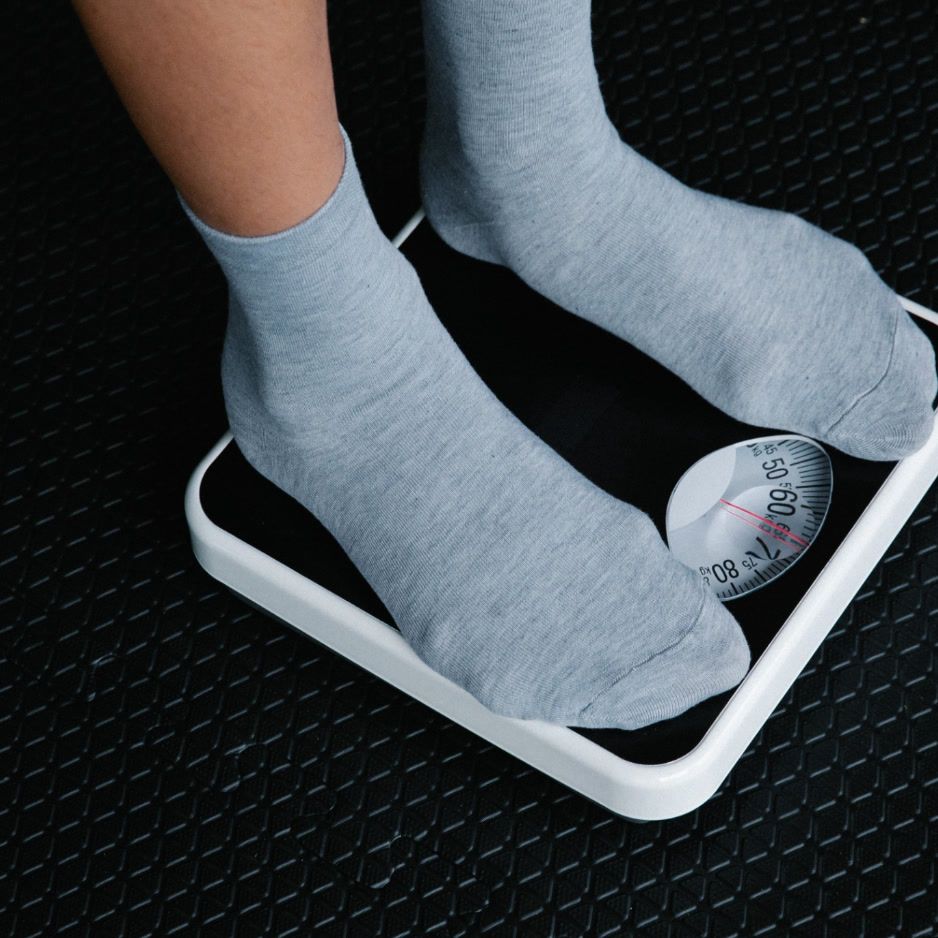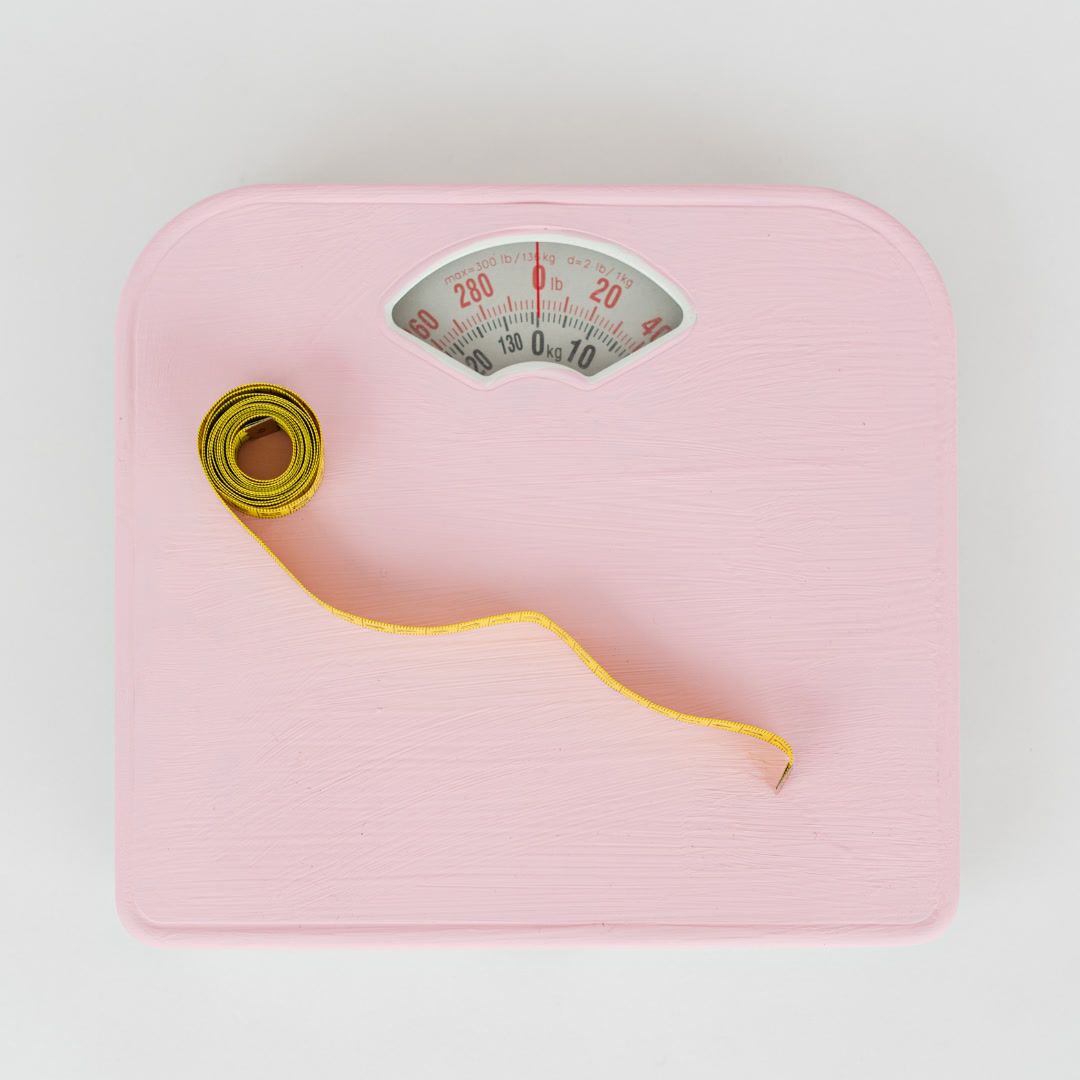What Is Nordic Walking? Benefits, Gear & Technique

What Is Nordic Walking? Benefits, Gear & Technique Guide
Want to turn your regular walk into a full‑body, joint‑friendly workout? That’s Nordic walking: you walk with lightweight poles and use a gentle push‑off to engage your arms, core, and back while you move. It combines the familiar motion of walking with an upper‑body push that increases intensity. This guide covers what Nordic walking involves, its key benefits, and how to get started.
Quick answer: Nordic walking is walking with special poles to work your upper body while you walk. Done right, it can burn around 20% more calories than regular walking and help you go faster with less joint stress (Sources: Harvard Health; British Nordic Walking; Cleveland Clinic).
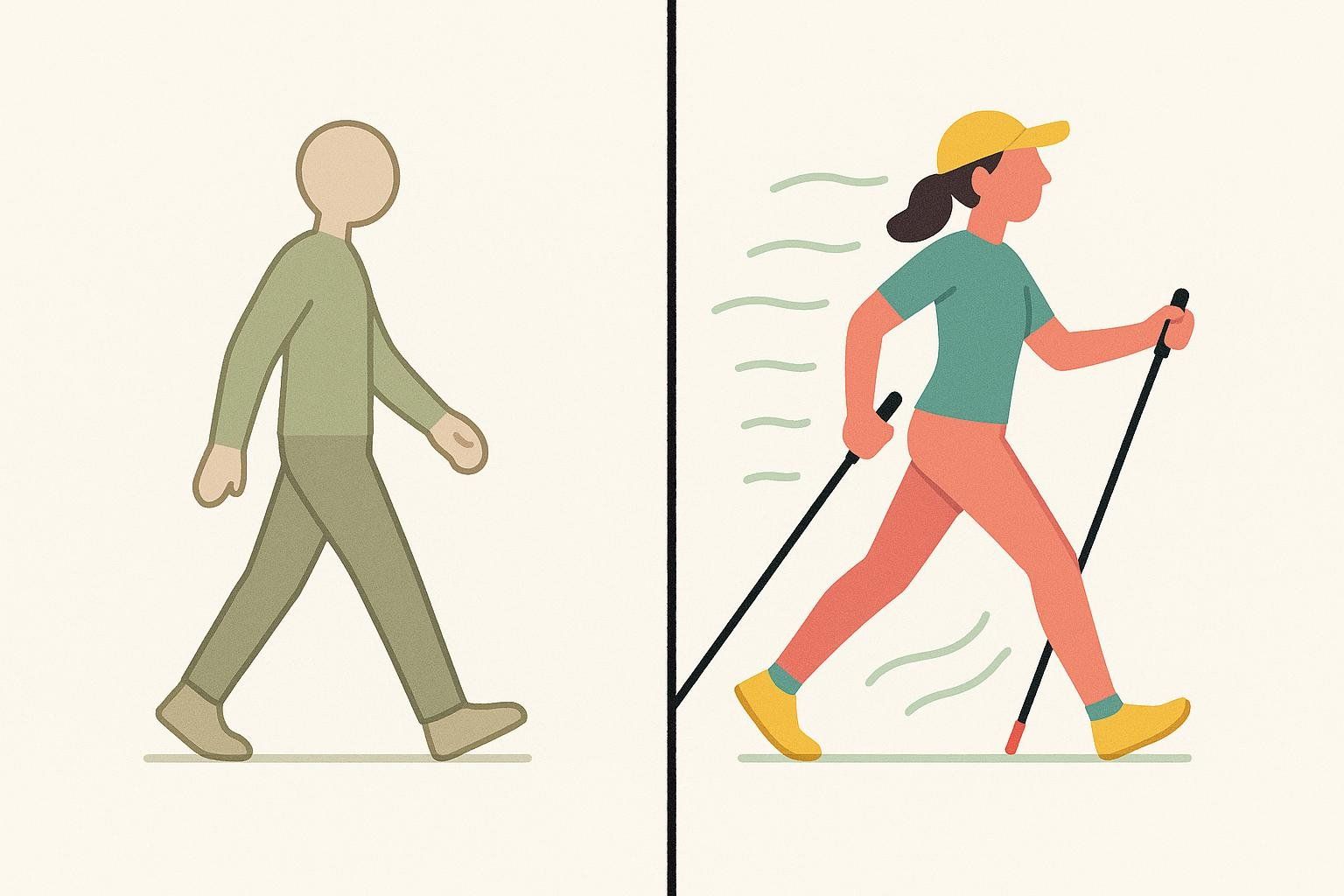
How Nordic Walking Works
Nordic walking began as off‑season training for cross‑country skiers in Finland. The poles have glove‑style straps so you can push through your palm as you walk. That gentle push recruits your arms, shoulders, back, and core—turning an everyday walk into a smooth, full‑body effort.
Top Benefits at a Glance

- Burn more calories. Research commonly shows about a 20% increase in energy burn vs. regular walking.
- Whole‑body activation. When done well, you’ll engage most major muscle groups, including arms and core.
- Heart and metabolic perks. Linked to improved aerobic fitness and favorable cholesterol and waist‑size changes (Harvard Health).
- Joint‑friendly stability. Poles share the load from ankles/knees/hips and add balance support—great on uneven paths.
- Pick up the pace. The added propulsion can help you move faster and feel less fatigued.
- Mood boost. Like other outdoor cardio, it’s tied to better mood and quality of life.
Essential Gear (And How Nordic Poles Differ From Trekking Poles)
- Poles
- Nordic‑specific glove‑style straps let you push through your palm.
- Tips: carbide for trails; removable rubber “paws” for pavement.
- Materials: aluminum (durable, budget) or carbon (lighter, less vibration). Typical price range: $20–$200 depending on material/features.
- Types: fixed length or adjustable for travel/tuning.
- Footwear: Any comfy walking shoe with traction works—no special shoes required.
- Key difference vs. trekking poles: Trekking poles are typically planted in front of the body for stability on uneven terrain. Nordic poles are planted slightly behind you so you can push for propulsion—that’s what drives the extra calorie burn and speed.
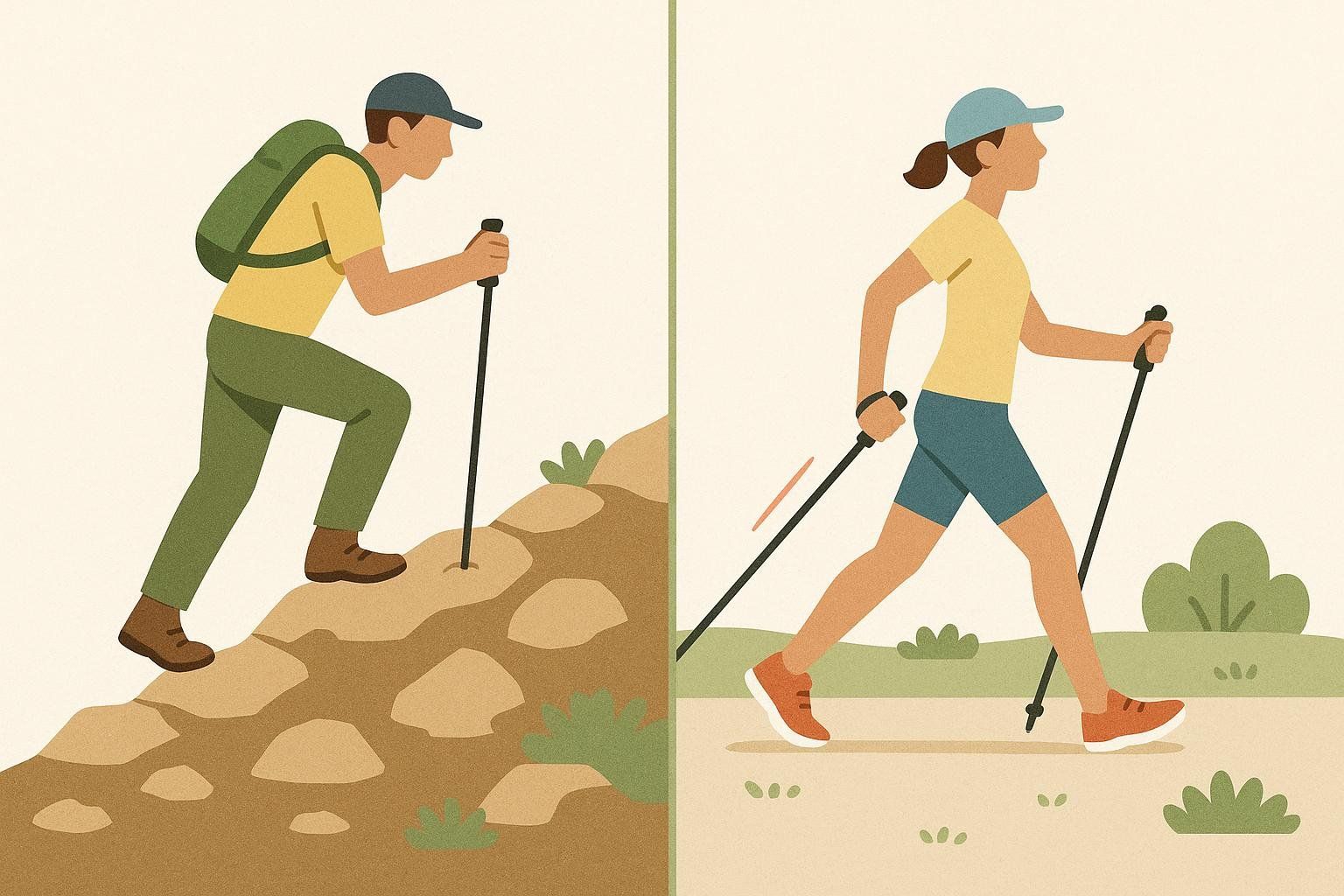
Finding the Right Pole Length
Your pole length should feel natural and help you stand tall.
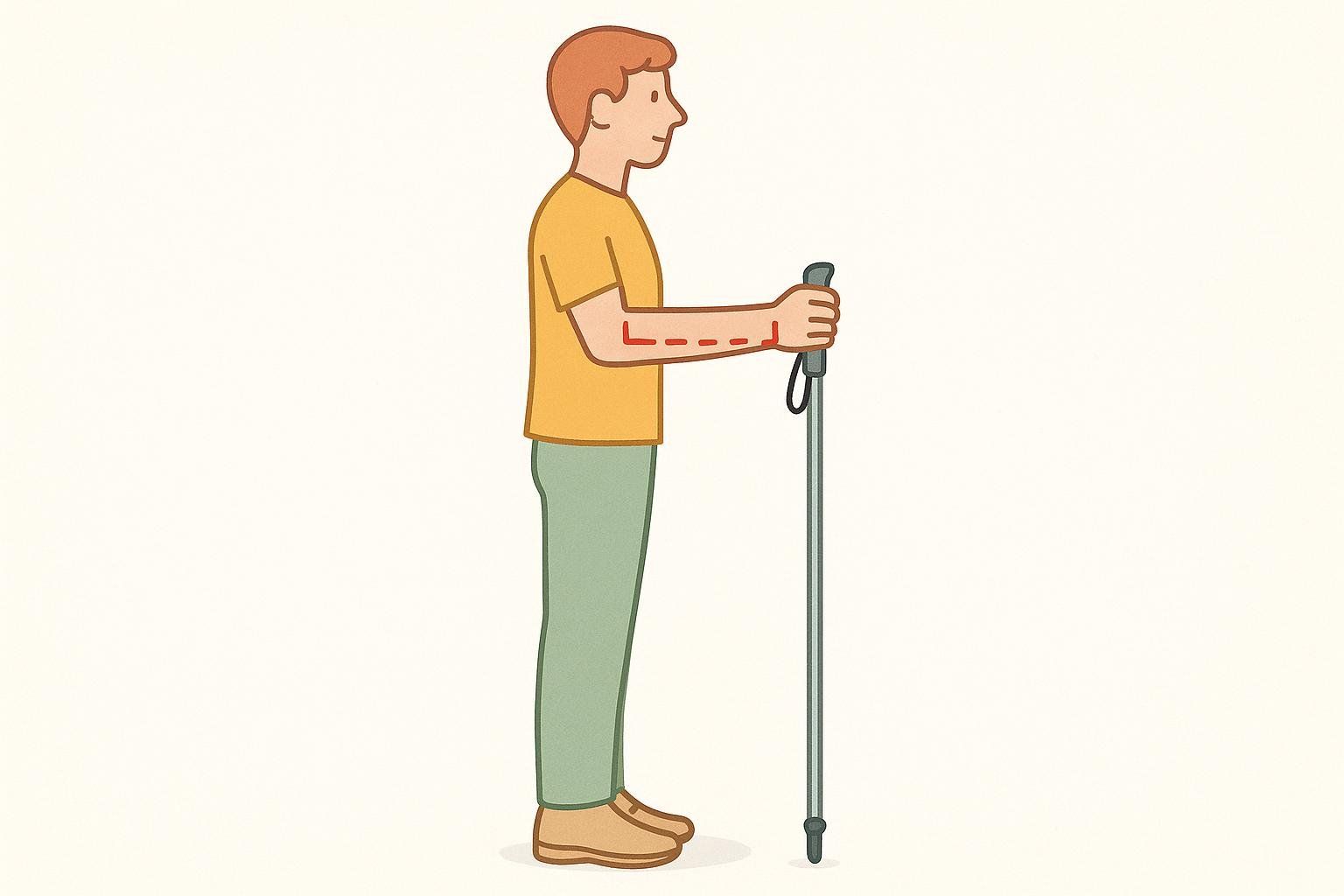
- Quick formula: height (cm) × 0.68–0.70, then round to the nearest 5 cm. Many instructors aim for ~70% of height with your elbow near 90° (SportMedBC; British Nordic Walking).
- Fit check: Hold the grip with the tip on the ground. Your forearm should be parallel to the floor or angled slightly downward.
- Pro tip: If you’re between sizes, new to the sport, or rehabbing, start a touch shorter. As skill builds, some walkers like a bit longer for more trunk rotation.
Step‑By‑Step: How to Nordic Walk
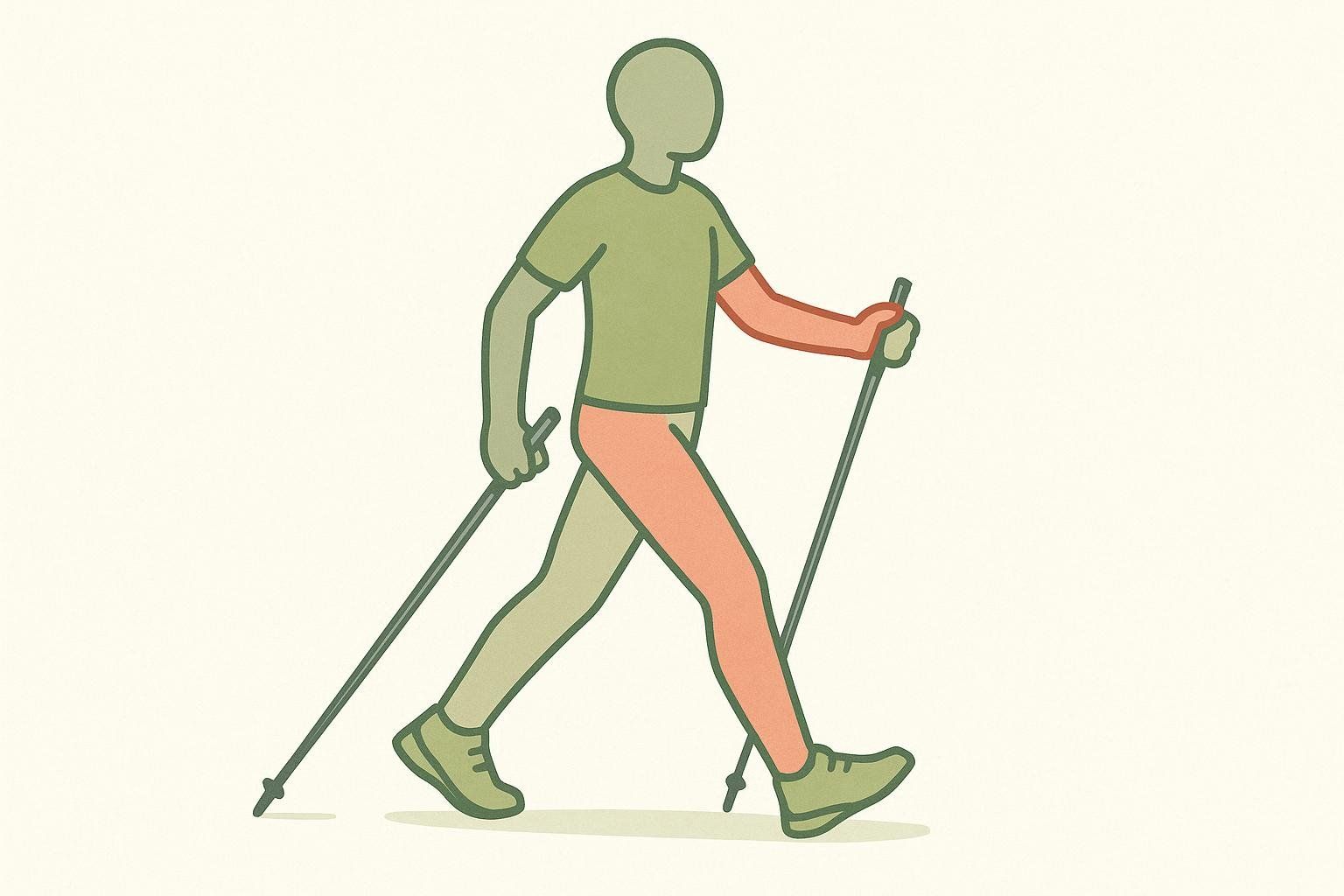
Start on a flat path. Keep shoulders relaxed and stand tall.
- Set your posture. Look ahead, ribs down, light core brace.
- Find your natural gait. Walk a few steps without poles to set rhythm.
- Use opposite arm and leg. Right foot forward, left arm forward—then switch.
- Plant the pole behind you. Lightly touch down just behind your stance foot—don’t stab out in front.
- Push through the strap. As your back foot pushes off, press the strap with your palm to glide forward. Let your hand open naturally behind the hip.
- Roll heel‑to‑toe. Land on the heel, roll through midfoot, push off the big toe.
- Build range. Gradually lengthen stride and arm swing as coordination improves.
Common Mistakes (And Easy Fixes)
- Planting poles ahead of your body → try shifting the plant slightly behind your stance foot to push, not pull.
- Tense shoulders/short arm swing → focus on softening your grip (use the strap) and let the hand open behind the hip.
- Shuffling steps → practice the heel‑to‑toe roll and allow gentle trunk rotation.
Is Nordic Walking Safe for Me?
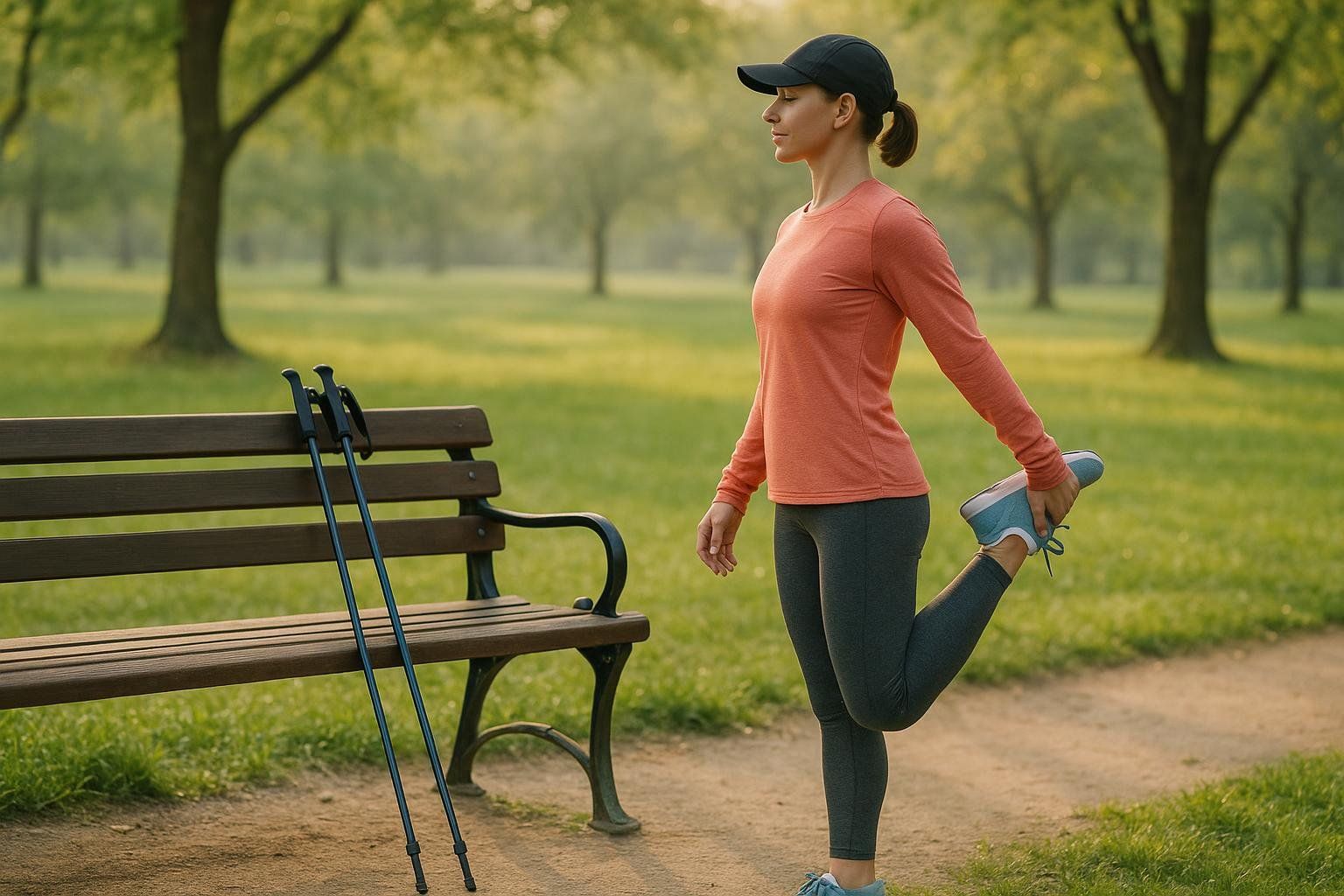
- For most people, yes—especially if you want more stability. If you have heart disease or medical conditions, check with your clinician first.
- Use caution if you’re recovering from wrist, elbow, or shoulder injuries; pole loading can irritate those joints.
- Start with 15–20 minute sessions, including a 5‑minute warm‑up and a 5‑minute cool‑down, and progress gradually.
- If you walk at dawn/dusk, add reflective gear and a small light.
Sample Nordic Walking Workouts
The following sample plans use the RPE scale to guide intensity.

-
Gentle start / Low‑impact plan (20–30 min, 3×/week)
- Warm‑up: 5–10 minutes easy with poles (RPE 3–4)
- Main set: 8–12 × 60 seconds steady (RPE 5) + 60 seconds easy
- Cool‑down: 5–10 minutes easy
- Notes: Soft pole plants, short strides; avoid hills at first
-
General fitness (30–45 min, 3–5×/week)
- Warm‑up: 10 minutes
- Main set: 4 × 5 minutes brisk (RPE 6–7) + 2 minutes easy
- Optional: hills for variety
- Strength: pair with 2 days/week of basic strength
-
Performance (40–60 min, 2–3×/week)
- Warm‑up: 15 minutes progressive
- Intervals: 6–10 × 2–3 minutes hard (RPE 7–8) + 2–3 minutes easy
- Technique drills: exaggerated push‑off, longer arm swing, cadence control
Tip: For general health, aim for about 150 minutes/week of moderate activity (like brisk Nordic walking), plus 2 days of muscle‑strengthening work (CDC).
Coaching, Classes, and Community
- Find certified instruction via the International Nordic Walking Federation (INWA) or national directories.
- Certified coaching helps you nail posture, pole timing, and propulsion efficiently.
Track What’s Changing With BodySpec
Nordic walking can help reduce fat mass, trim waist size, and boost fitness over time. Skip the guesswork and measure:
- Book a BodySpec DEXA scan to quantify fat, lean mass, and visceral fat and track changes from your program (see our body comp scan guide).
- New to DEXA? Read about radiation safety.
FAQs
Is Nordic walking the same as hiking with trekking poles?
No. Trekking poles are planted in front for stability. Nordic poles are planted slightly behind you with a glove‑style strap so you can push for propulsion.
Do I need special shoes?
No—any comfortable walking shoe with traction works.
How often should I Nordic walk?
Many people do well with 3–5 sessions per week. For general health, aim for ~150 minutes/week of moderate activity.
I have shoulder or wrist pain—can I still do it?
Get clinical guidance first. Poles can stress upper‑limb joints, but instructors can often adjust technique, pole length, or intensity to reduce strain.
The Bottom Line
Nordic walking makes your walks more effective without more impact—you’ll likely burn more calories, feel steadier, and enjoy a satisfying whole‑body rhythm. Size your poles, learn the basics, and track real changes with BodySpec’s DEXA scans.

